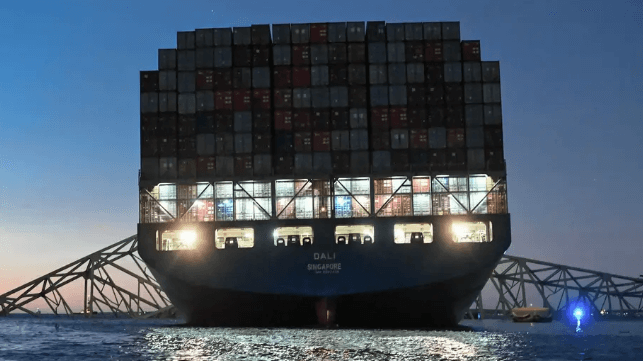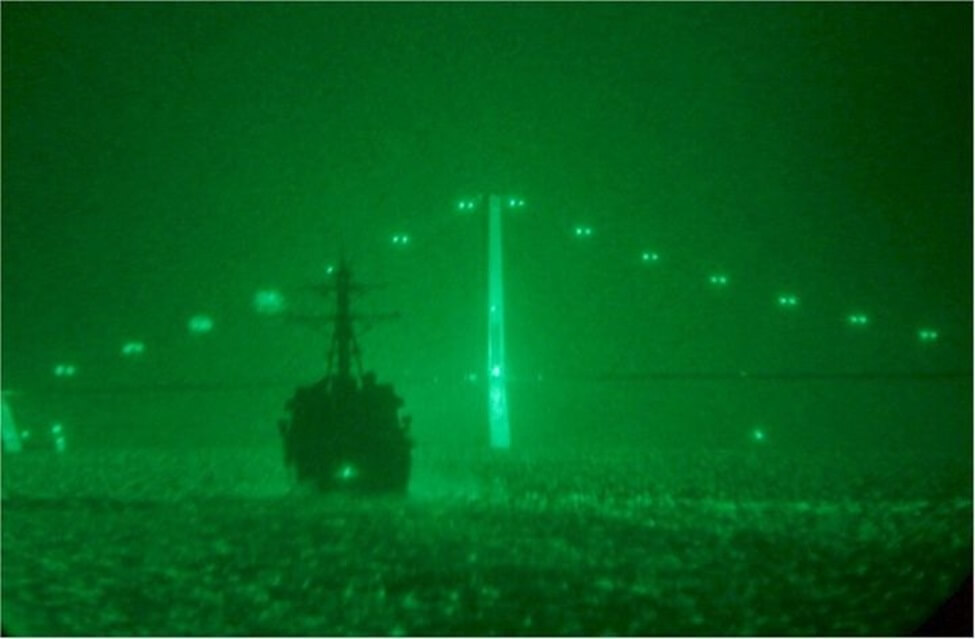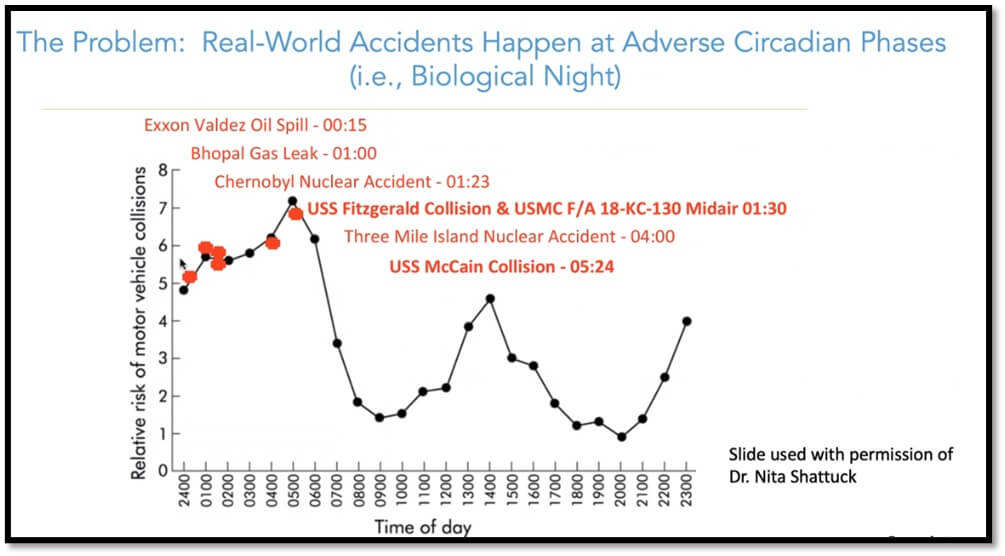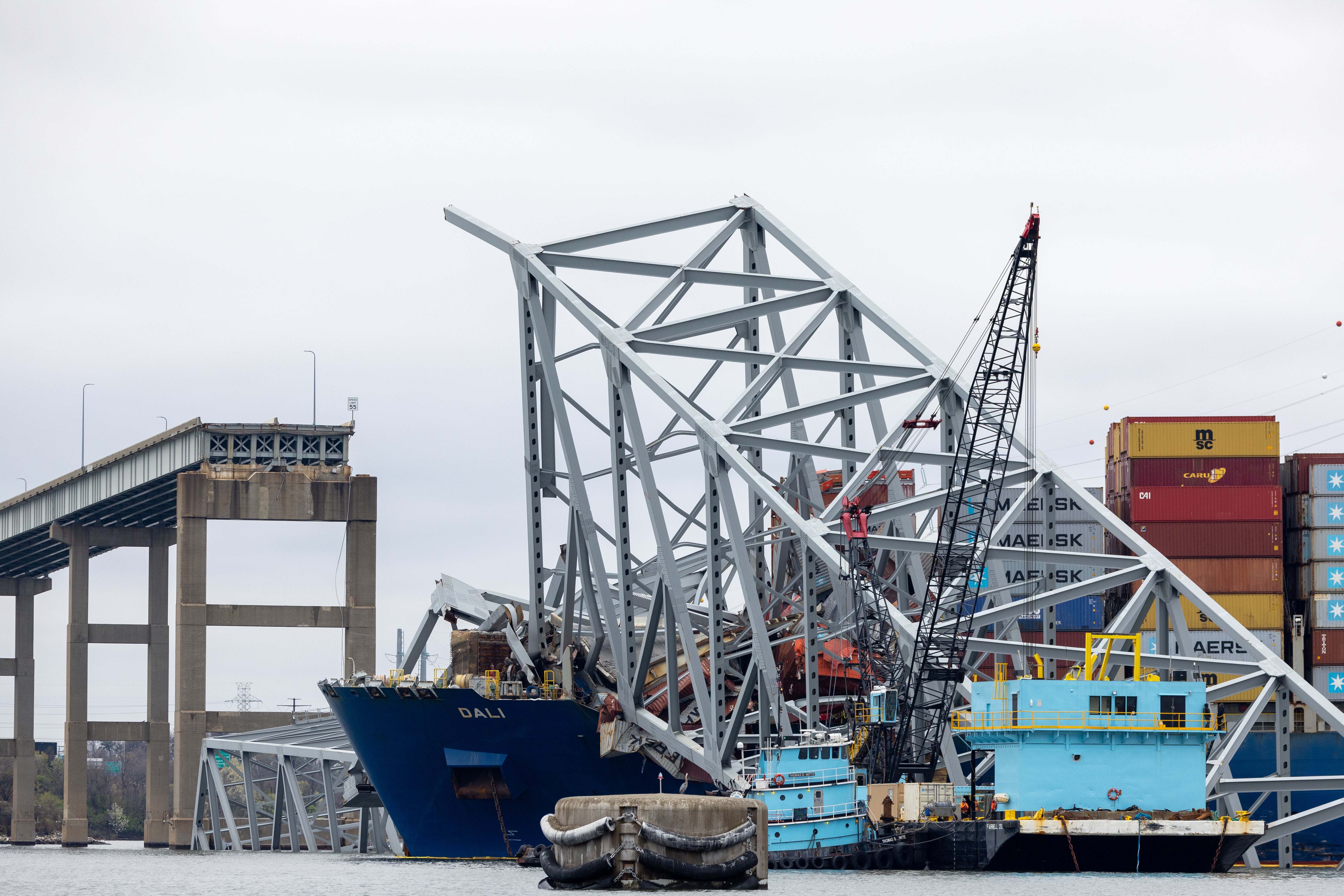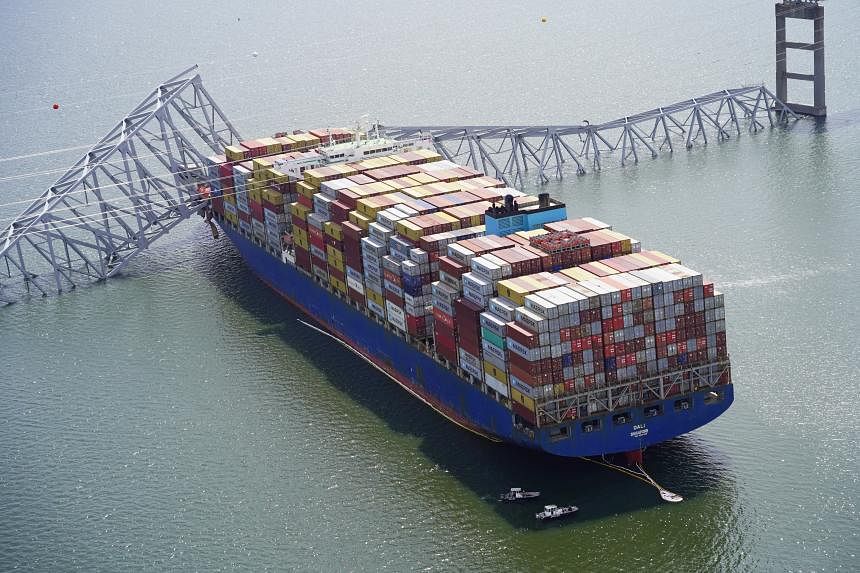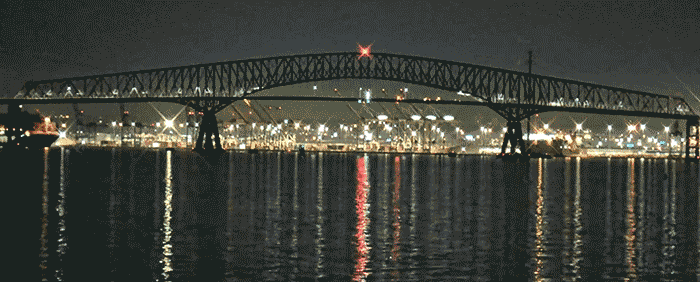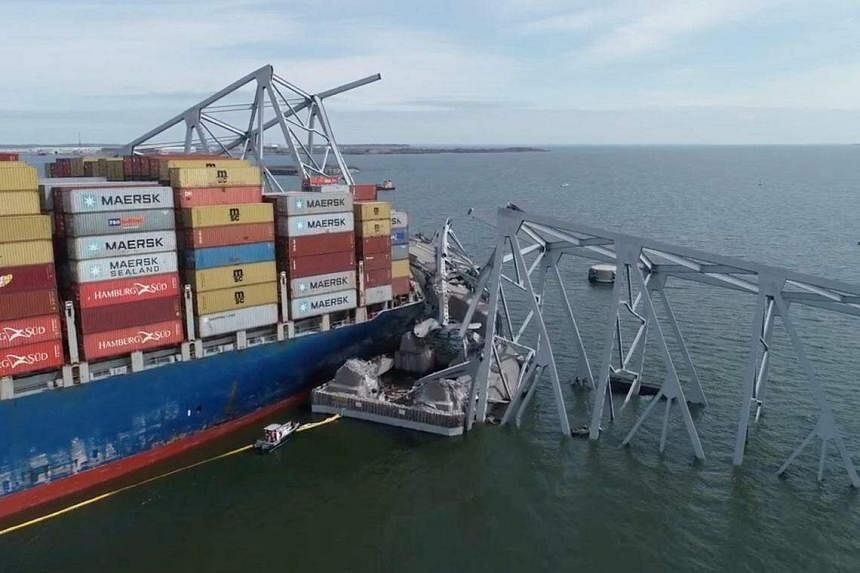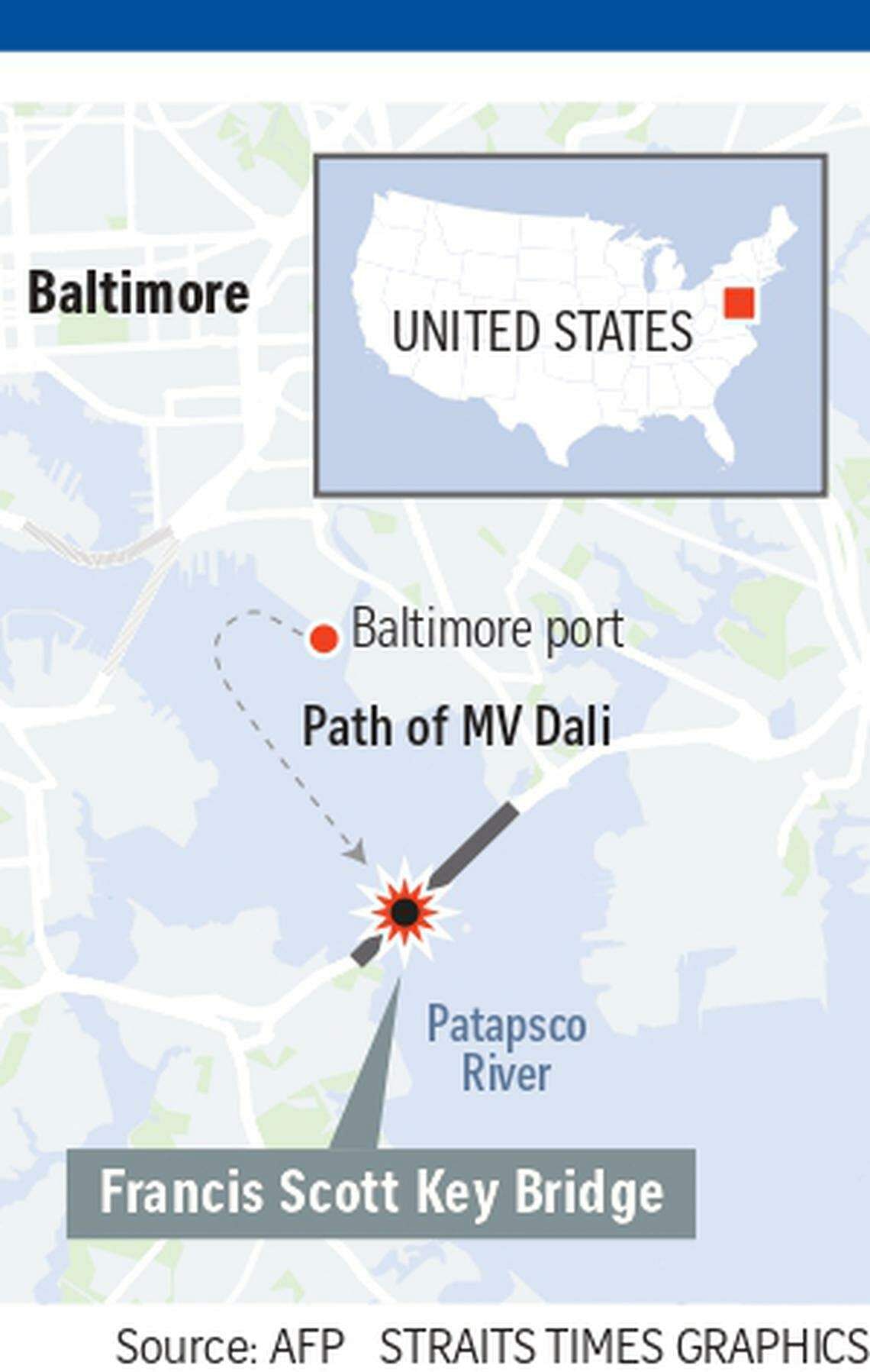Nicole Grether and Gloria Pazmino, CNN
Sun, May 12, 2024
The planned demolition to remove a portion of the Francis Scott Key Bridge in Maryland has been rescheduled to Monday afternoon due to inclement weather conditions, according to the United States Coast Guard.
Crews were expected Sunday evening to use small explosives to break apart a massive chunk of the Baltimore bridge that collapsed on a cargo ship six weeks ago after the US Coast Guard previously pushed back the controlled demolition by an hour.
The operation was originally to take place Saturday, but officials on Friday announced it would be postponed due to an adverse weather forecast.
The explosion is now slated to take place at 5 p.m. ET on Monday, according to the Coast Guard.
The planned demolition is aimed at helping officials remove debris and ultimately free the 213-million-pound Dali cargo ship, which veered off course March 26 and struck a pillar of the Francis Scott Key Bridge, causing it to fall into the water below. The collapse killed six construction workers and destroyed a key thoroughfare, threatening the economy at the Port of Baltimore.
Sunday’s weather in the Baltimore area – which included lightning strikes – is what led officials to hold off on the demolition.
“We were all set to do the precision cuts … today,” Nick Ameen with the US Coast Guard told reporters Sunday. “There’s several factors, environmental factors among them, that have unfortunately pushed that event until tomorrow.”
Ameen called the process a “dynamic” one and said, “We will absolutely not sacrifice safety for speed.”
He added: “Whenever there’s a lightning strike in the area, that pushes the clock back, and so that clock just kept getting pushed back and pushed back.”
Officials last week recovered the sixth and final body, allowing them to proceed with the plan to free the Dali. If the operation succeeds this weekend, the ship could be refloated and returned to the Port of Baltimore as soon as this week, The Baltimore Sun and CNN affiliate WBAL previously reported.
“The safest and swiftest method to remove the bridge piece from on top of the M/V Dali is by precision cuts made with small charges,” the Key Bridge Response Unified Command said in a news release last week.
“This is an industry-standard tool in controlled demolition that will break the span into smaller pieces,” it added, “which will allow the work of refloating the vessel and removing it from the federal channel.”
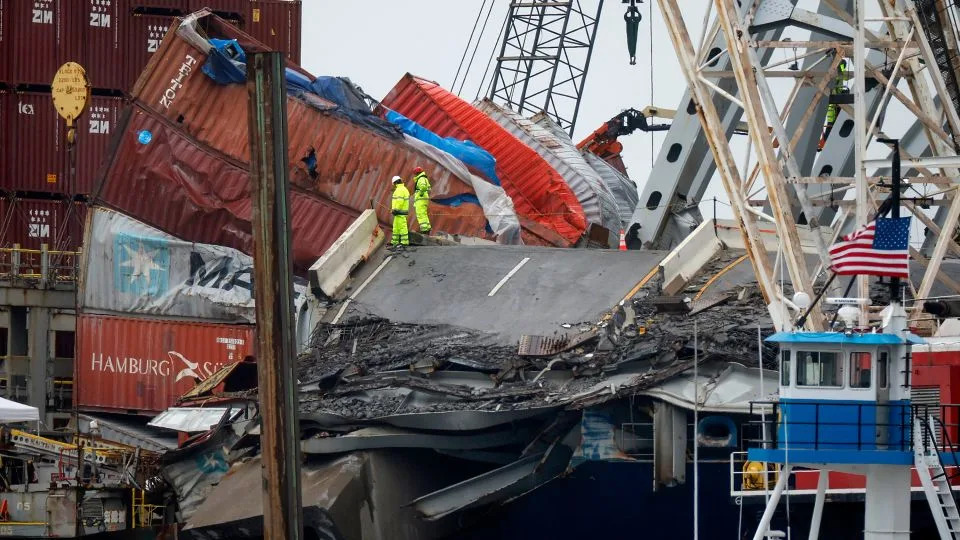
Salvage crew members work on the deck of the cargo ship Dali on Friday, May 10, 2024. - Kevin Dietsch/Getty Images
According to an infographic from the US Army and the US Army Corps of Engineers, the process will “look like multiple puffs of smoke and sound like fireworks.” Nearby communities should receive a “cellular notification” beforehand, according to Unified Command, which includes state and federal authorities, the US Coast Guard and Army Corps of Engineers among them.
The 21 members of the ship’s crew – who have not left the ship since it struck the bridge in late March – will remain onboard during the operation, according to Darrel Wilson, a spokesperson for Synergy Marine Group, which manages the Dali.
“They will have a safe place on the vessel where they can shelter during the controlled explosion,” Wilson said, adding that the crew was “holding up well” despite the stress of recent weeks.
“Even though they are not sailing, they are still performing their normal crew duties,” Wilson said. “This is still a large, complicated piece of equipment and there is a lot they have to look after.”
While the Dali’s management company has tried to support the crew on board, members of Baltimore’s seafaring community remain concerned for their wellbeing given the length of time they’ve been aboard the ship.
Rev. Josh Messick, executive director of the Baltimore International Seafarers’ Center, told CNN the crew is well taken care of but feels disconnected from the rest of the world. They have internet access, thanks to hotspots Messick’s group helped deliver, but they do not have their cellphones, which were confiscated by authorities as part of the investigation.
“They are a little anxious because of the phone situation. We are trying to get their cellphones back to them,” Messick said. “It’s not just a phone, they can’t access their online banking, their finances, their contacts, they can’t look at photos of their loved ones before they go to sleep at night. It’s a lot more than just a phone.”
In the meantime, several investigations continue into the cause of the disaster and who is responsible. The House Committee on Transportation & Infrastructure plans to hold a hearing Wednesday on the catastrophe, with testimony expected from the chair of the National Transportation Safety Board and officials from the Coast Guard, Army Corps of Engineers and the US Department of Transportation.
CNN’s Paradise Afshar, Holly Yan and Dakin Andone contributed to this report.
Controlled demolition at Baltimore bridge collapse site postponed due to weather
LEA SKENE
Updated Sun, May 12, 2024 at 2:29 PM MDT·4 min read
21
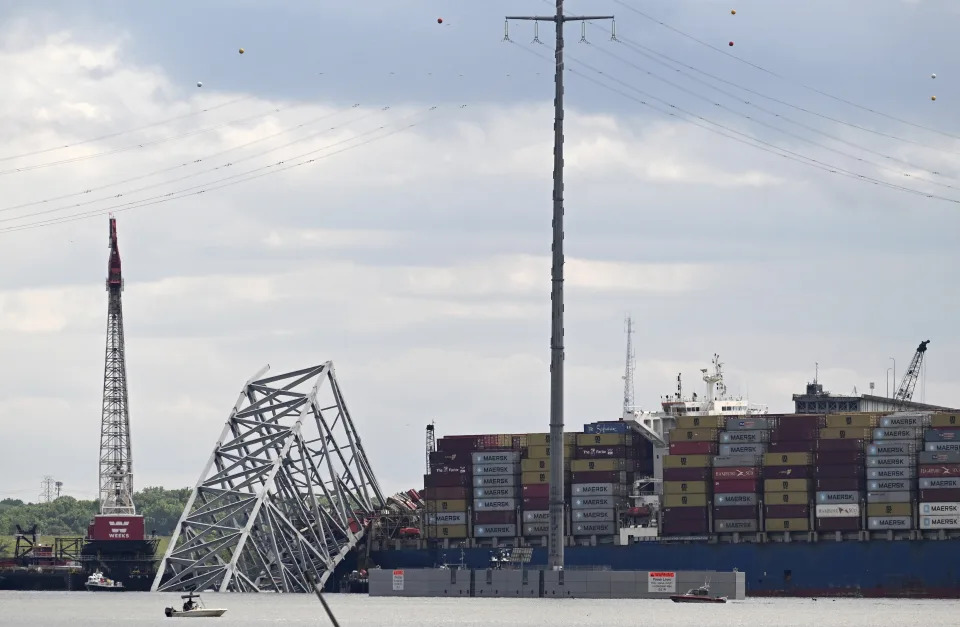
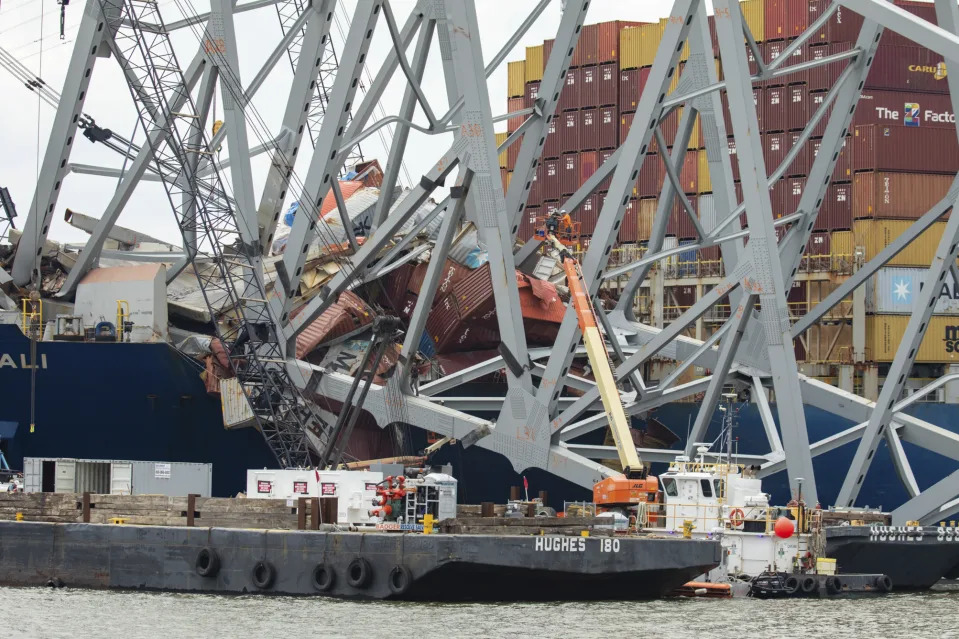
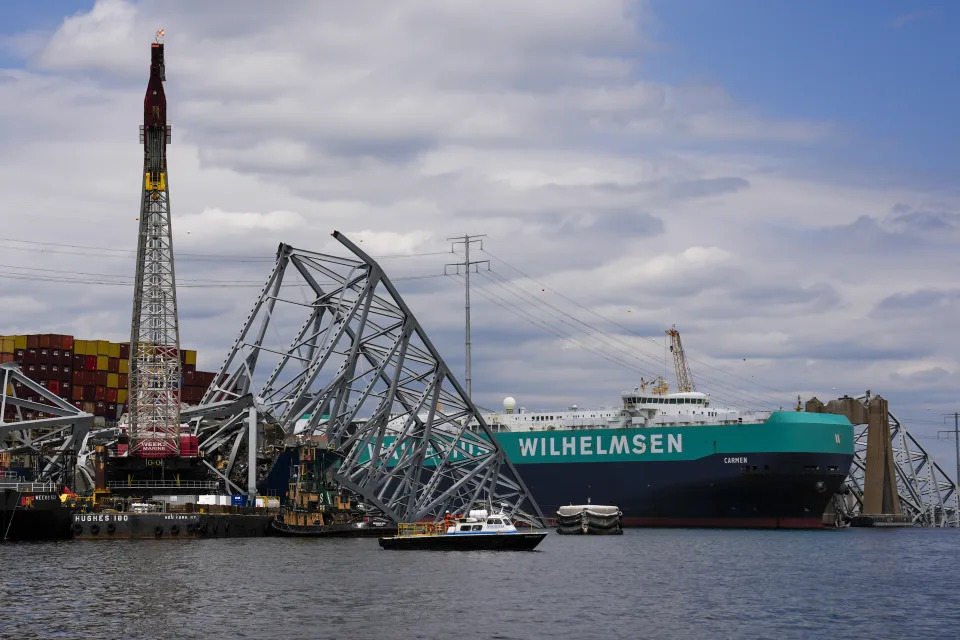
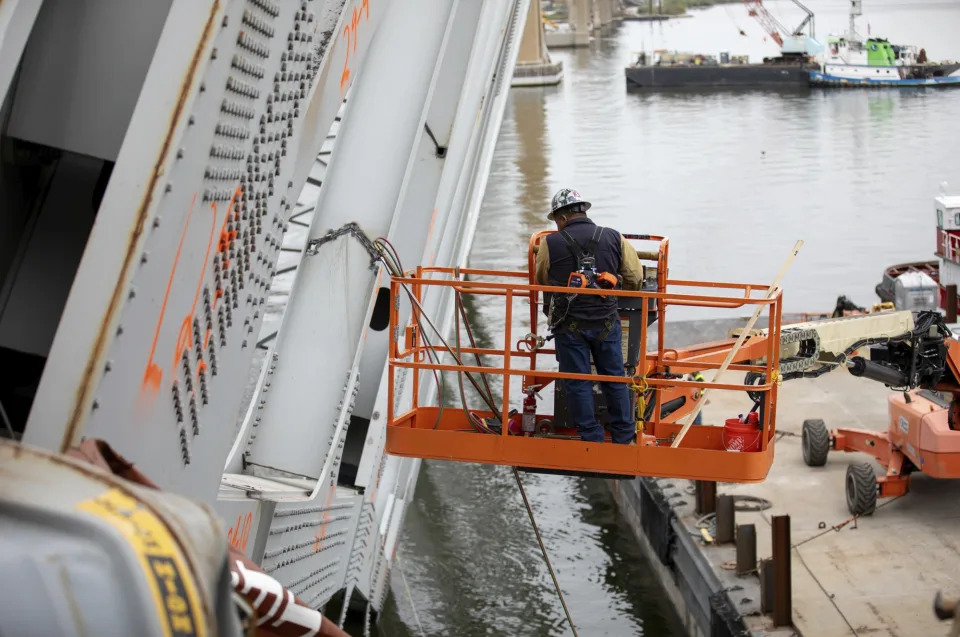
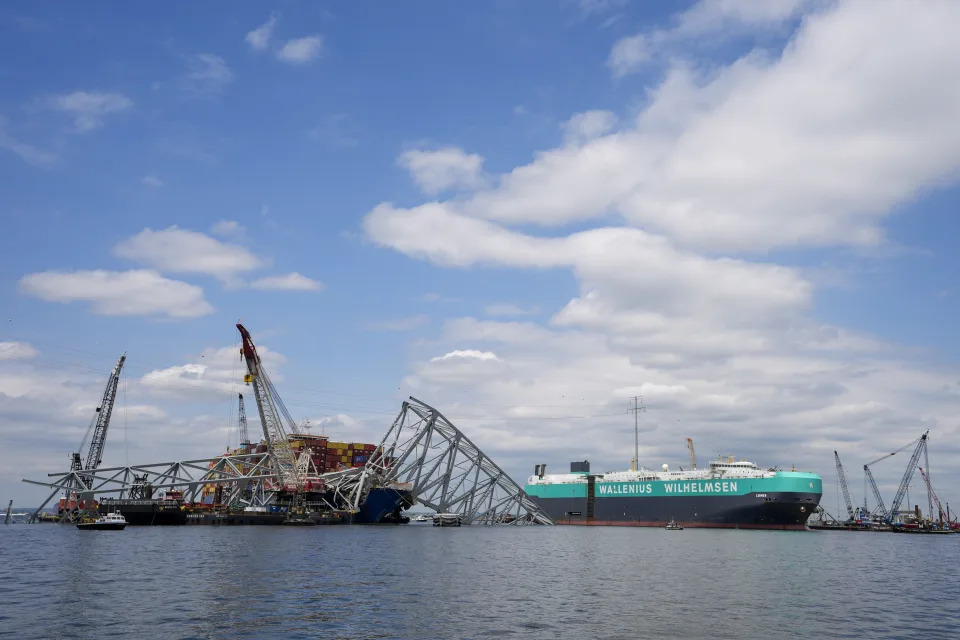
Remnants of the collapsed Francis Scott Key Bridge and the cargo ship Dali are seen, Sunday, May 12, 2024, in Baltimore. For safety reasons, officials postponed a controlled demolition, which was planned for Sunday, to break down the largest remaining span of the collapsed bridge. The bridge came crashing down under the impact of the massive container ship on March 26. (AP Photo/Steve Ruark)
ASSOCIATED PRESSMore
BALTIMORE (AP) — The controlled demolition of the largest remaining steel span of the collapsed Francis Scott Key Bridge in Baltimore has been postponed because of weather conditions, officials said Sunday afternoon.
Crews have been preparing for weeks to use explosives to break down the span, which is an estimated 500 feet (152 meters) long and weighs up to 600 tons (544 metric tons).
It landed on the ship’s bow after the Dali lost power and crashed into one of the bridge’s support columns shortly after leaving Baltimore. Since then, the ship has been stuck amidst the wreckage and Baltimore’s busy port has been closed to most maritime traffic.
Officials said the demolition had been tentatively moved to Monday evening. They said lightning in the area and rising tides Sunday prompted them to reschedule.
Six members of a roadwork crew plunged to their deaths in the March 26 collapse. The last of their bodies was recovered from the underwater wreckage last week. All the victims were Latino immigrants who came to the U.S. for job opportunities. They were filling potholes on an overnight shift when the bridge was destroyed.
The controlled demolition will allow the Dali to be refloated and guided back into the Port of Baltimore. Once the ship is removed, maritime traffic can begin returning to normal, which will provide relief for thousands of longshoremen, truckers and small business owners who have seen their jobs impacted by the closure.
The Dali’s 21-member crew will stay onboard the ship while the explosives are detonated.
William Marks, a spokesperson for the crew, said they would shelter “in a designated safe place” during the demolition. “All precautions are being taken to ensure everyone’s safety,” he said in an email.
Officials said the demolition is the safest and most efficient way to remove steel under a high level of pressure and tension.
“It’s unsafe for the workers to be on or in the immediate vicinity of the bridge truss for those final cuts,” officials said in a news release Sunday.
In a videographic released last week, authorities said engineers are using precision cuts to control how the trusses break down. They said the method allows for “surgical precision” and the steel structure will be “thrust away from the Dali” when the explosives send it tumbling into the water.
Once it’s demolished, hydraulic grabbers will lift the resulting sections of steel onto barges.
“It’s important to note that this controlled demolition is not like what you would see in a movie,” the video says, noting that from a distance it will sound like fireworks or loud thunder and give off puffs of smoke.
So far, about 6,000 tons (5,443 metric tons) of steel and concrete have been removed from the collapse site. Officials estimate the total amount of wreckage at 50,000 tons (45,359 metric tons), about the equivalent of 3,800 loaded dump trucks.
Officials previously said they hoped to remove the Dali by May 10 and reopen the port’s 50-foot (15.2-meter) main channel by the end of May.
The Dali is currently scheduled to be refloated during high tide on Tuesday, officials said Sunday. They said three or four tugboats will be used to guide the ship to a nearby terminal in the Port of Baltimore. It will likely remain there for a few weeks and undergo temporary repairs before being moved to a shipyard for more substantial repairs.
The Dali crew members haven’t been allowed to leave the vessel since the disaster. Officials said they have been busy maintaining the ship and assisting investigators. Of the crew members, 20 are from India and one is Sri Lankan.
The National Transportation Safety Board and the FBI are conducting investigations into the bridge collapse.
Danish shipping giant Maersk chartered the Dali for a planned trip from Baltimore to Sri Lanka, but the ship didn’t get far. Its crew sent a mayday call saying they had lost power and had no control of the steering system. Minutes later, the ship rammed into the bridge.
Officials have said the safety board investigation will focus on the ship’s electrical system.
Removal of Francis Scott Key Bridge wreckage rescheduled due to lightning
IVAN PEREIRA and LEAH SARNOFF
Sun, May 12, 2024
Baltimore's Francis Scott Key Bridge removal has been rescheduled until Monday after lightning was spotted near the site on Sunday, officials told ABC News.
Engineers were scheduled Sunday to set off controlled explosives in the steel remains of the Key Bridge to help remove the debris from the freighter that crashed in March.
The removal process is rescheduled for Monday at 5:00 p.m., officials said.
Ongoing storms in the Baltimore and Washington D.C. region have delayed the demolition since Friday.
The explosives will split a large section of truss at specific locations to allow "salvors to use cranes and barges already on scene to remove these sections of the bridge and ultimately remove the MV Dali from the channel," Unified Command, the group in charge of the recovery and salvage operations, said in a statement.
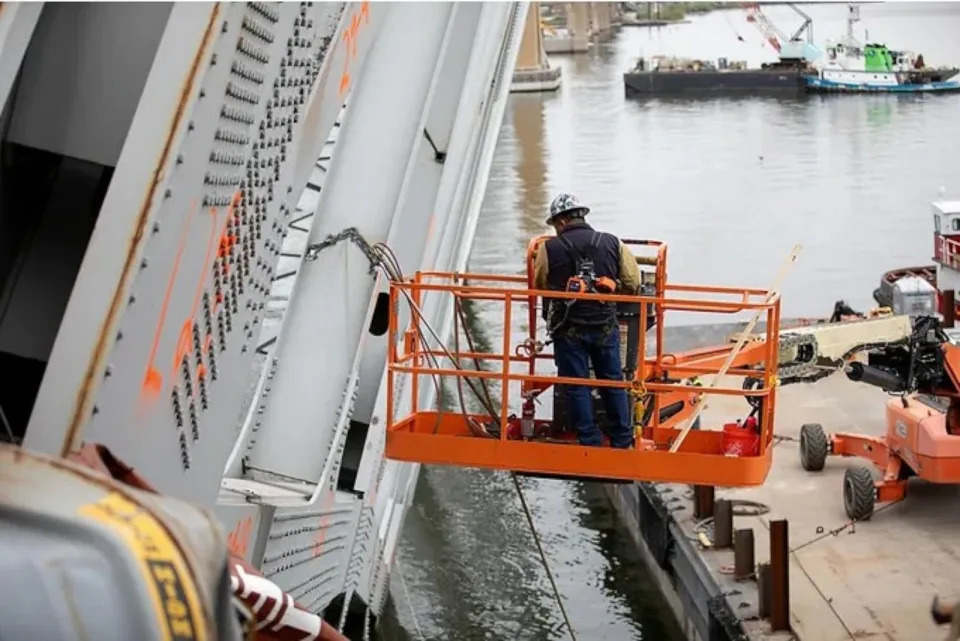
PHOTO: Salvors with the Unified Command prepare charges for upcoming precision cuts to remove section 4 from the port side of the bow of the M/V DALI, April 21, 2024, during the Key Bridge Response 2024. (U.S. Army Corps of Engineers photo by Christopher Rosario)
"By using precision cuts, we reduce risks to our personnel and can safely and efficiently continue clearing the channel for the Port of Baltimore," Capt. David O’Connell, the Key Bridge Response federal on-scene coordinator, said in a statement.
MORE: Baltimore bridge collapse timeline: Inside the cargo ship collision
Officials said hearing protection will not be required outside of a 2,000-yard radius of the site.
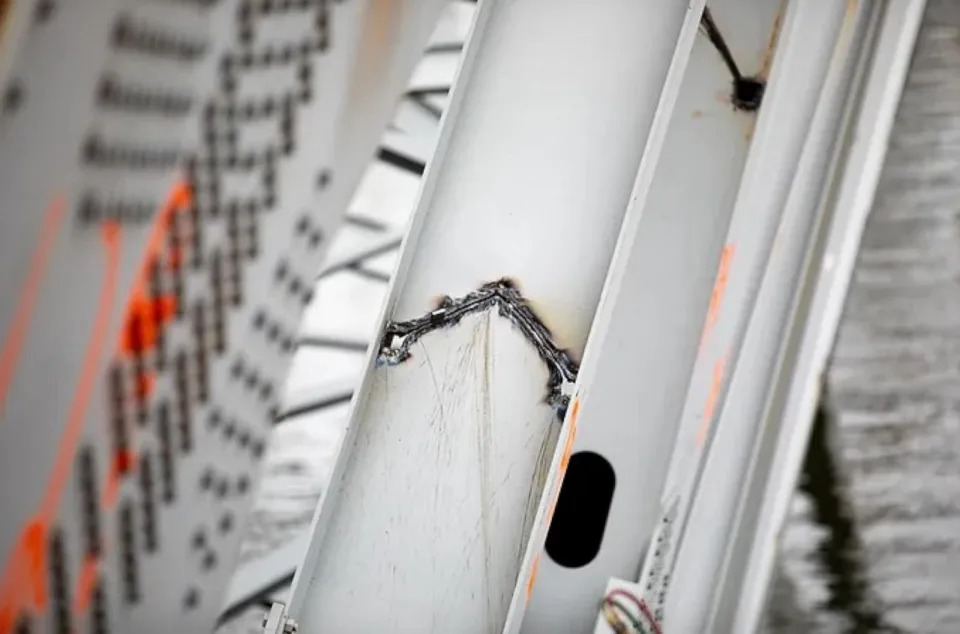
PHOTO: Salvors with the Unified Command prepare charges for upcoming precision cuts to remove section 4 from the port side of the bow of the M/V DALI, April 21, 2024, during the Key Bridge Response 2024. (U.S. Army Corps of Engineers photo by Christopher Rosario)
"Sound levels outside of the noise radius will be no louder than a standard fireworks show and will last two to five seconds," Unified Command said.
A cellphone alert will go out to residents warning them about the explosion, Unified Command said.
The freighter has been stuck in the location ever since it slammed into the bridge during the early morning hours on March 26 after the vessel experienced a malfunction.
MORE: Containers being removed from ship that struck Baltimore bridge
Body camera footage of the incident, which was released Friday by the Maryland Department of Natural Resources in response to a public records request by ABC News, shows officers getting an up-close look at the location where the bridge once stood.
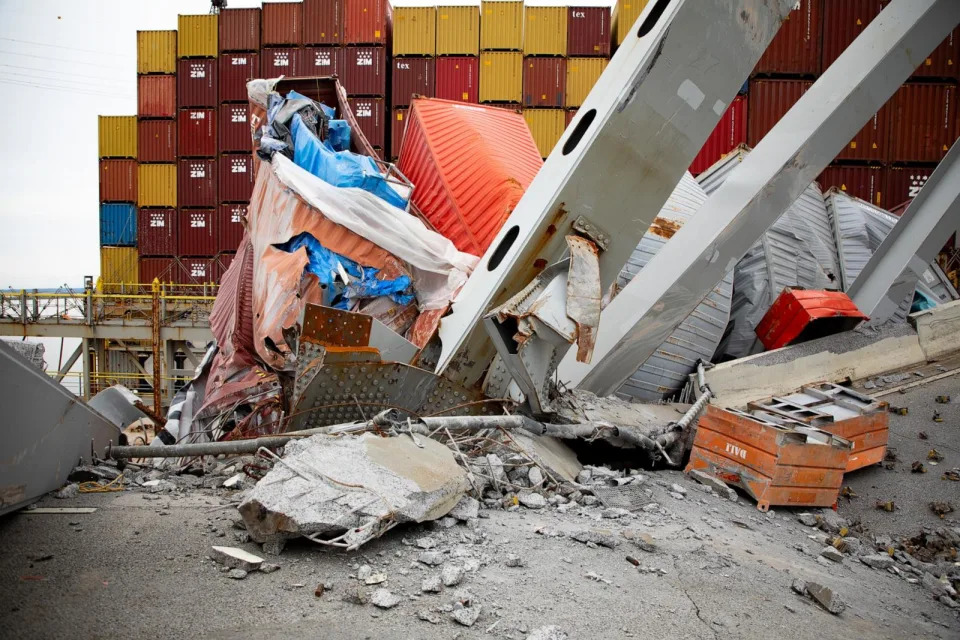
PHOTO: Wreckage removal is ongoing on the M/V DALI to prepare to refloat and remove the vessel from the Fort McHenry Federal Navigation Channel, April 21, 2024. (Christopher Rosario/U.S. Army Corps of Engineers, Baltimore District)
"There is no bridge," an officer can be heard saying. "The whole center span is gone completely. It’s in the water."
Another officer reported encountering a "large debris field" with containers on the side of the river closest to Baltimore. In one video, he can be heard shouting toward the freighter to ask if anyone was hurt. Someone aboard the ship responded that their finger was cut.
MORE: Body of 6th construction worker killed in Key Bridge collapse recovered
The bridge suffered a near-total collapse and caused massive logistical delays in the Port of Baltimore. Six construction workers who were on the bridge at the time were killed in the incident.
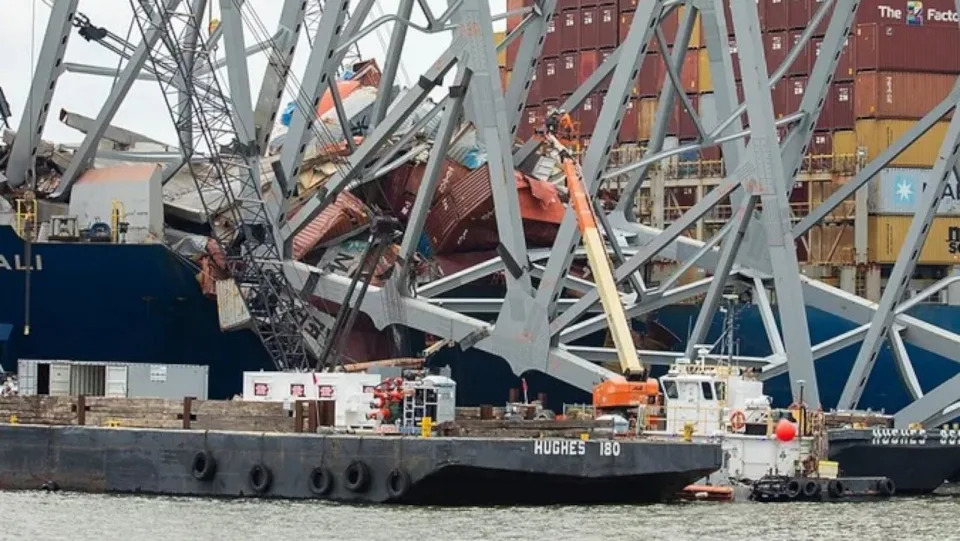
PHOTO: Salvors with the Unified Command prepare charges for upcoming precision cuts to remove section 4 from the port side of the bow of the M/V DALI, May 7, 2024, during the Key Bridge Response 2024. (U.S. Army Corps of Engineers photo by Christopher Rosario)
The incident is still under investigation and the recovery efforts are ongoing.
ABC News' Beatrice Peterson, Jared Kofsky and Josh Margolin contributed to this report.
Body camera footage captures first responders' reactions in wake of Baltimore bridge collapse
Julia Gomez, USA TODAY
Sun, May 12, 2024
Body camera footage caught the moment first responders were left shocked by the Baltimore bridge collapse.
"This is [expletive] bad," one officer is heard saying in the footage. "Like, there is no bridge."
In the video, which was originally published by The Baltimore Banner, an officer is heard stuttering while standing on a boat as he looks out to where the Francis Scott Key Bridge once stood.
"It's like something's missing here in the skyline..." said the officer. "The whole center span is gone completely. It's in the water."
The media outlet reports that at 5 a.m., the officer was talking on his cell phone. He stood on a boat that neared the collapsed bridge and spoke with someone who reported that everything was suspended until there was sunlight.
What happened during the bridge collapse?
On March 26, early in the morning, a 984-foot container ship struck the bridge, which left it in ruins. A video posted to YouTube shows how the bridge collapsed and plunged into the water that morning.
The incident killed six construction workers who were on the bridge fixing potholes.
On May 7, more than a month after the collapse, the final victim was recovered from the river according to police.
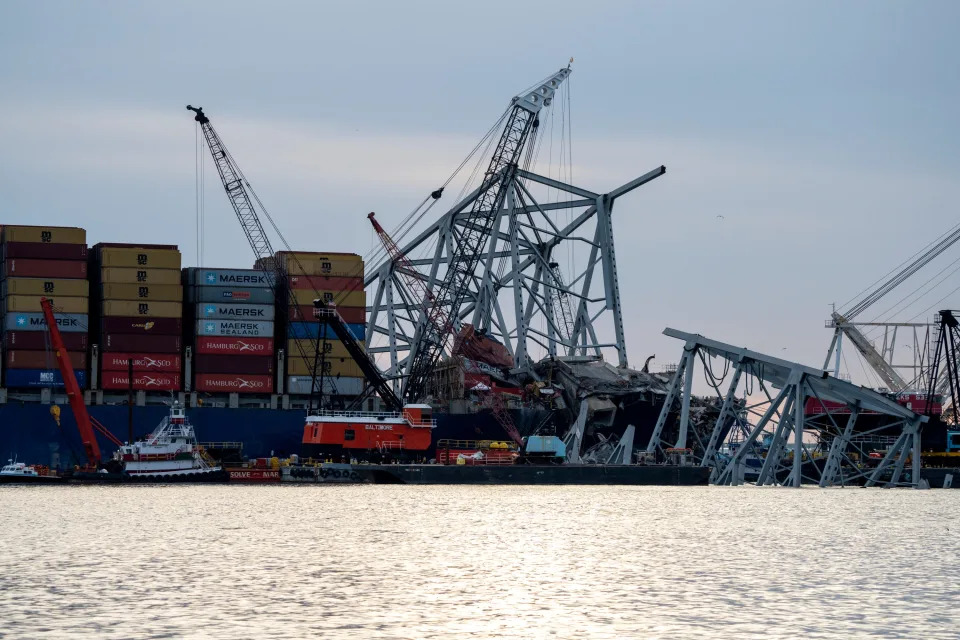
Salvage work continues on the Francis Scott Key Bridge on May 9, 2024. The major span over the Patapsco River in Baltimore collapsed on March 26, 2024 after it was struck by a Singapore-flagged container ship 'Dali’, killing six road workers who were on the bridge at the time.











